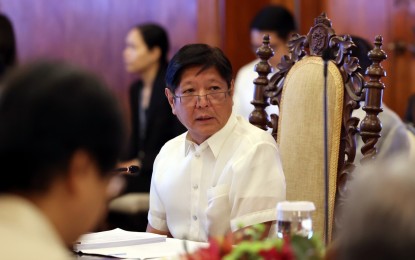
SPENDING PLAN. President Ferdinand R. Marcos Jr. presides over the 17th Cabinet meeting at the State Dining Room in Malacañan Palace on Tuesday (July 2, 2024). During the meeting, the President approved the 2025 National Expenditure Program, which contains the proposed PHP6.352 trillion national budget next year. (Presidential Photojournalists Association)
MANILA – President Ferdinand R. Marcos Jr. on Tuesday approved the 2025 National Expenditure Program (NEP) which will serve as Congress’ basis for the General Appropriations Bill (GAB).
Presiding over the 17th Cabinet meeting in Malacañang, Marcos said the 2025 NEP reflects the administration’s priorities, such as food security, social protection, healthcare, housing, disaster resilience, infrastructure, digital connectivity, and energization.
“You see a really good thing,” Marcos said in the meeting where Department of Budget and Management (DBM) Secretary Amenah Pangandaman presented the proposed national budget for 2025.
“Since I’ve seen it before on the macro level, I think the priorities in terms of our proposed appropriations, upon addressing it, weighted our priorities properly in terms of appropriations,” he said.
The NEP is the national government’s spending plan for the next fiscal year.
Once approved by Congress, it will be known as the GAB, and will become the General Appropriations Act upon signing into law.
For 2025, the proposed national budget is set at PHP6.352 trillion.
The sectors getting the lion’s share of the proposed budget include education, public works, health, interior and local government, and defense.
Other government top priorities are social welfare, agriculture, transportation, the judiciary, and justice sectors.
In terms of expense class, getting the largest chunk are maintenance and other operating expenses followed by personnel services, capital outlays, and financial expenses.
Among the factors considered by the government in evaluating the fiscal year 2025 budget proposals were the availability of fiscal space, the implementation and readiness of Program/Activity/Projects, the agency’s absorptive capacity, and the alignment with Budget Priorities Framework and Philippine Development Plan 2023-2028. (PNA)
